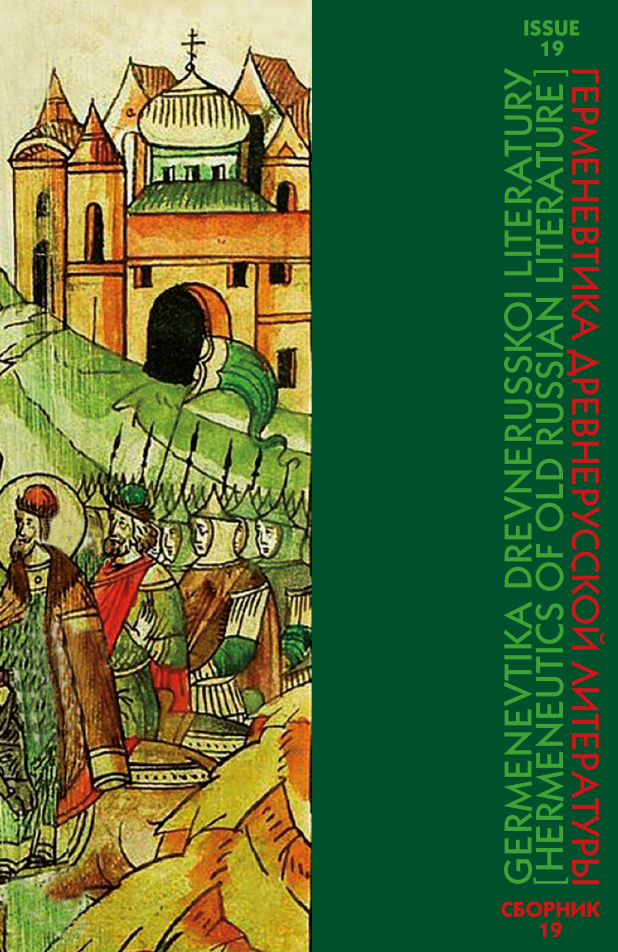Abstract:
The article examines the attribution of singing schools of Moscow Rus’ by the features of musical style. The regional attribution of works of literature and art used in literary criticism and art history according to stylistic features is also possible in musical medievalistics. The basis for this is the stylistic commonality of monastic schools of church singing — Northern and Central Russian — with the main singing schools, respectively, Novgorod and Moscow. Since Veliky Novgorod and Moscow, as major cultural centers, served the monasteries of the regions, singing culture of the parish churches of these centers could not be isolated from the monastic culture. Therefore, projection of the stylistic norms of monastic singing, more studied by the author, on the parish one makes it possible to reveal its belonging to Novgorod or Moscow school (while specific general monastic features are not considered). The analysis was carried out on the material of hymns: hymns of Dormition of the Theotokos and Easter of demetic chant and the stichira “Come, let us please Joseph” of the 5th and 8th voices of the znamenny chant. The results of analysis prove that Dormition’s hymn and stichira to the 8th voice belong to the Novgorod singing school, and the Easter-hymn of tune of Fyodor Krestyanin and stichira of the 5th voice belong to the Moscow singing school.
REFERENCES
1 Vagner, G.K. Kanon i stil’ v drevnerusskom iskusstve [Canon and Style in Old Russian Art]. Moscow, Iskusstvo Publ., 1987. 285 p. (In Russian)
2 Kirillin, V.M. “Panegiricheskoe nasledie Pakhomiia Logofeta” [“Panegyric Legacy of Pachomius Logothetes”]. Germenevtika drevnerusskoi literatury [Hermeneutics of Old Russian Literature]. Issue 16–17, RAS: IWL RAS; ed. M.V. Pervushin. Moscow, 2014, pp. 962–1020. (In Russian)
3 Kirillin, V.M. “Ravnoapostol’nyi Vladimir v gomiliiakh i gimnografii XI–XV vv.: istoricheskie analogii i evoliutsiia obraza” [“Equal-to-the-Apostles Vladimir in Homilies and Hymnography of the 11th–15th Centuries: Historical Analogies and the Evolution of the Image”]. V poiskakh smysla: opyt interpretatsii pamiatnikov drevnerusskoi literatury [In Search of Meaning: Experience of Interpreting the Monuments of Old Russian Literature], IWL RAS. Moscow, Iazyki slavianskoi kul’tury Publ., 2022, pp. 35–68. (In Russian)
4 Likhachev, D.S. “Nekotorye zadachi izucheniia vtorogo iuzhnoslavianskogo vliianiia v Rossii” [“Some Tasks of Studying the Second South Slavic Influence in Russia”]. Issledovaniia po drevnerusskoi literature [Studies in Old Russian Literature]. Leningrad, Nauka Publ., 1986, pp. 3–56. (In Russian)
5 Likhachev, D.S. Poetika drevnerusskoi literatury [Poetics of Old Russian Literature]. 3rd ed., rev. Moscow, Nauka Publ., 1979. 352 p. (In Russian)
6 Likhachev, D.S. Razvitie russkoi literatury X–XVII vekov. Epokhi i stili [Development of Russian Literature of the 10th–17th Centuries. Epochs and Styles]. Leningrad, Nauka Publ., 1973. 254 p. (In Russian)
7 Pikkio, R. “‘Pletenie sloves’ i literaturnye stili pravoslavnykh slavian v pozdnem Srednevekov’e” [“‘Weaving of Words’ and Literary Styles of the Orthodox Slavs in the Late Middle Ages”]. Slavia Orthodoxa: Literatura i iazyk [Slavia Orthodoxa: Literature and Language]. Moscow, Znak Publ., 2003, pp. 633–656. (In Russian)
8 Pozhidaeva, G.A. Dukhovnaia muzyka slavianskogo Srednevekov’ia [Spiritual Music of the Slavic Middle Ages]. Moscow, Kompozitor Publ.; St. Petersburg, Nestor – Istoriia Publ., 2017. 472 p. (In Russian)
9 Pozhidaeva, G.A. Leksikologiia demestvennogo peniia [Lexicology of demestvenny chant]. Moscow, Znak Publ., 2010. 784 p. (In Russian)
10 Pozhidaeva, G.A. Pevcheskie traditsii Drevnei Rusi. Ocherki teorii i stilia [Singing Traditions of Old Rus’. Essays on Theory and Style]. Moscow, Znak Publ., 2007. 880 p. (In Russian)
11 Pozhidaeva, G.A. “Stilisticheskii podkhod v izuchenii regional’nykh traditsii pozdnego russkogo Srednevekov’ia (XVI–XVII vv.)” [“Stylistic Approach in the Study of Regional Traditions of the Late Russian Middle Ages (16th–17th Centuries)”]. Vestnik muzykal’noi nauki, vol. 10, no. 2, 2022, pp. 112–118. (In Russian)
12 Sarab’ianov, V.D., and E.S. Smirnova. Istoriia drevnerusskoi zhivopisi [History of Old Russian Painting]. Moscow, Orthodox St. Tikhon Humanitarian University Publ., 2007. 752 p. (In Russian)






